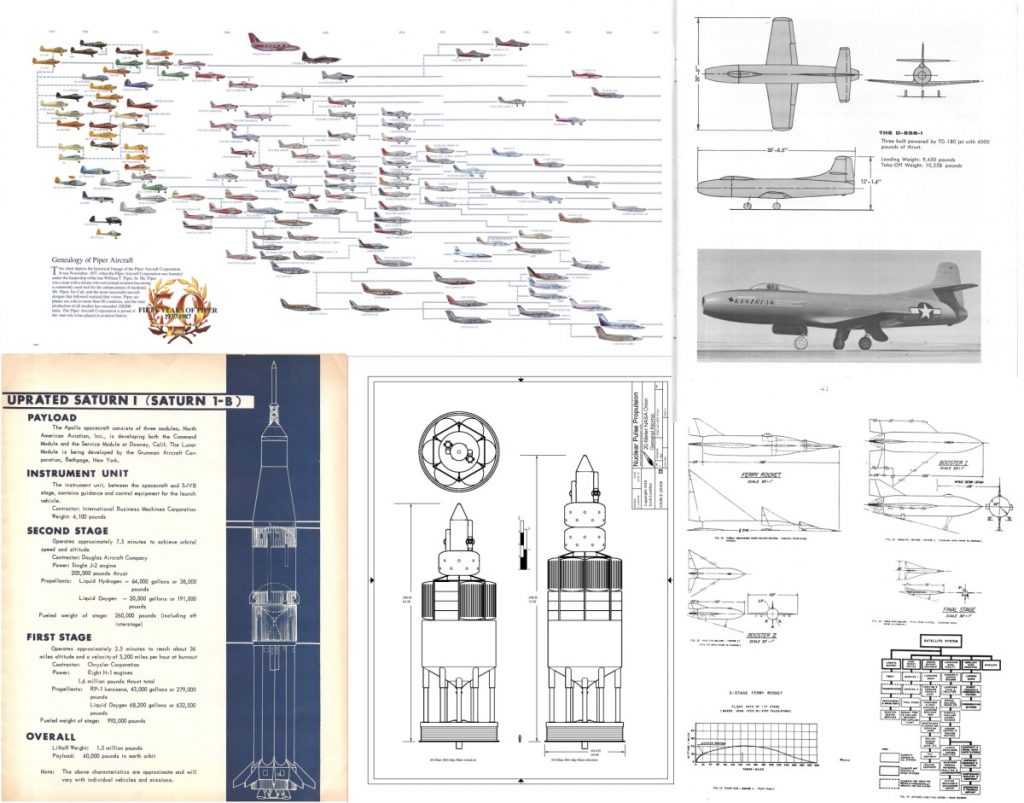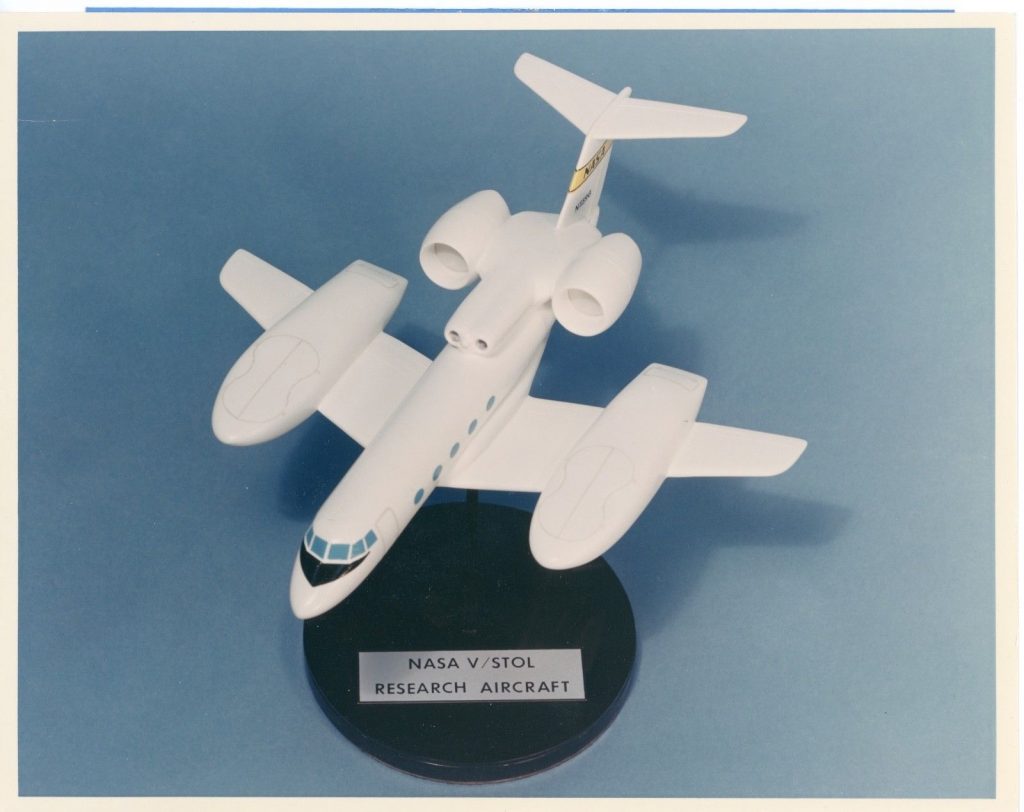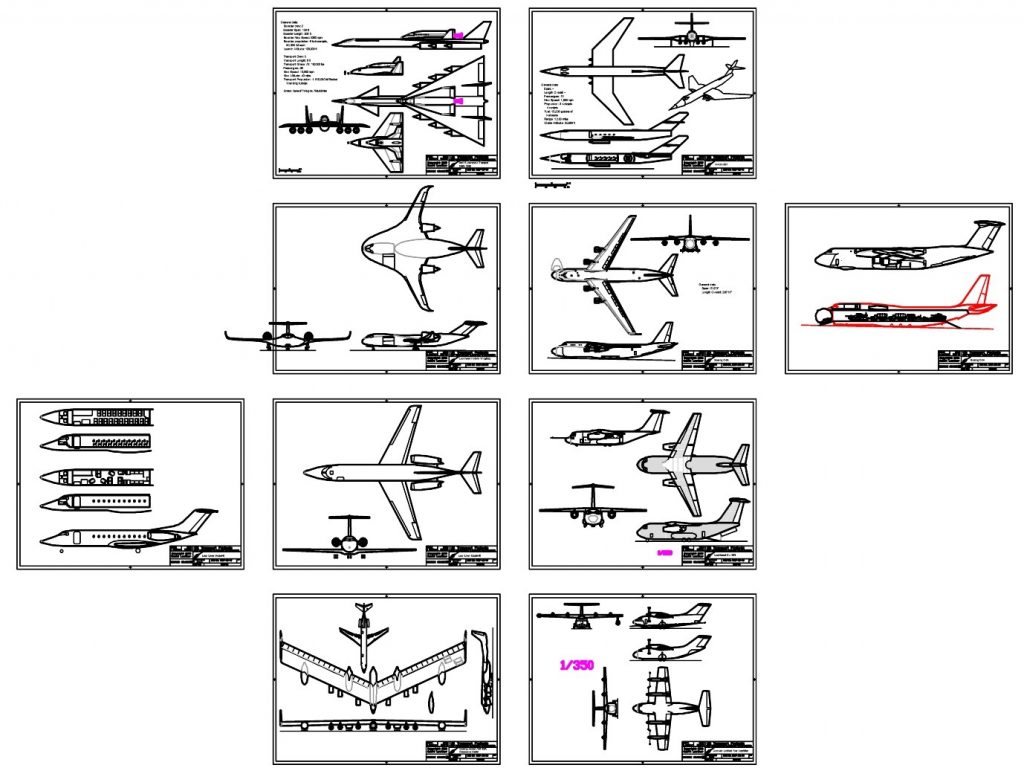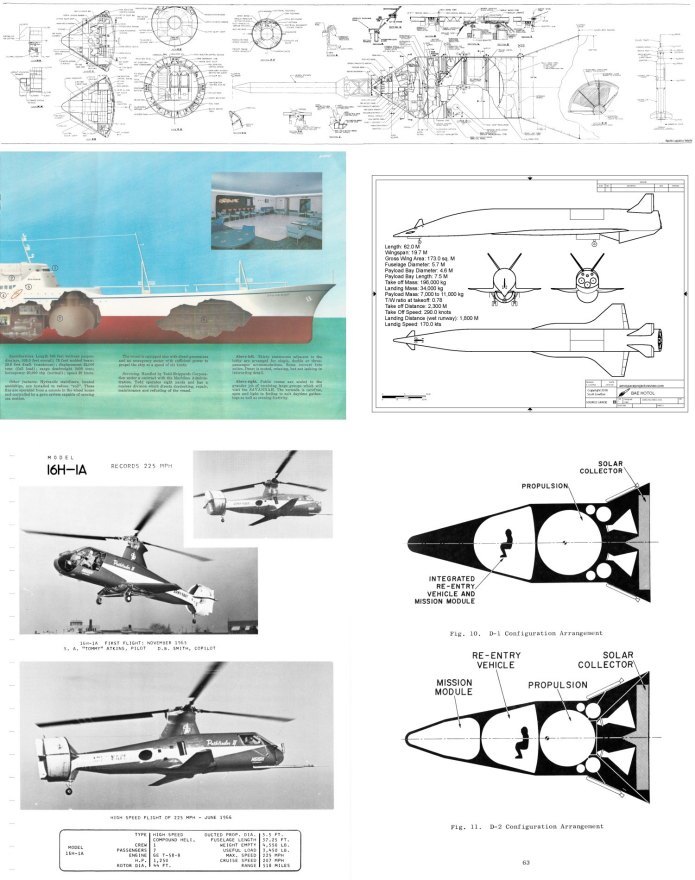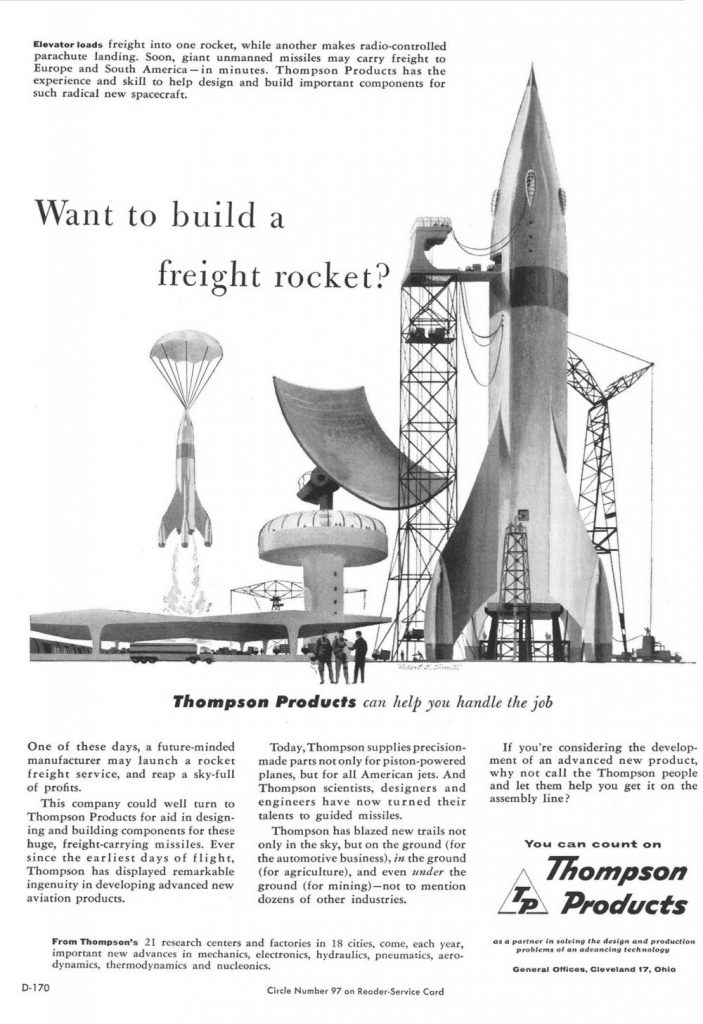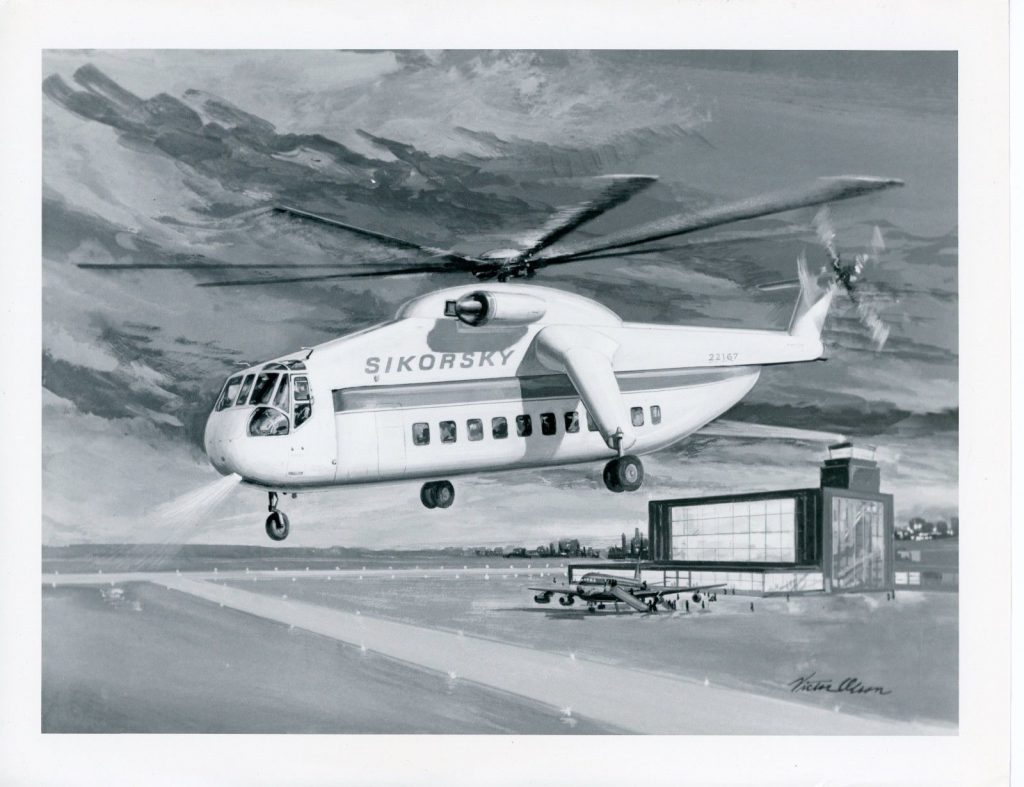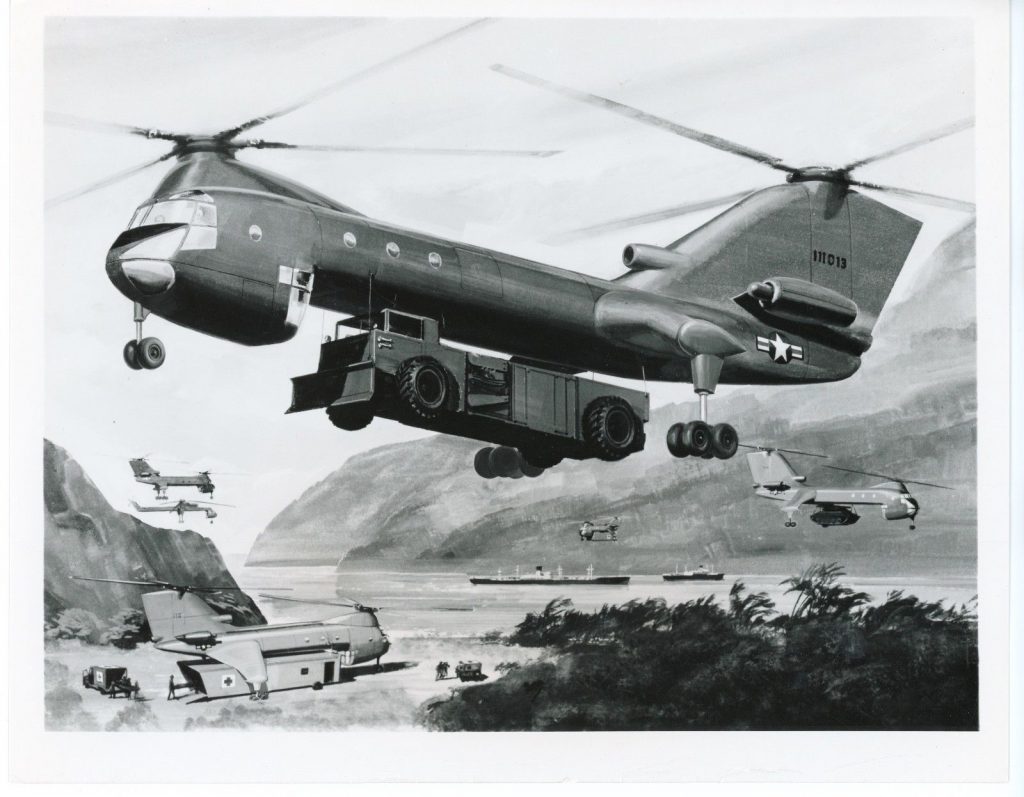I’ve just sent out the rewards for October, 2018, to APR Patrons. This months rewards include:
CAD diagram: 20-meter Orion spacecraft
Diagram: Genealogy of Piper aircraft
Document: “Story of the Uprated Saturn I” NASA-MSFC brochure circa 1966 describing the Saturn Ib, including future possibilities
Document: “Preliminary Design Study of a Three Stage Satellite Ferry Rocket Vehicle,” 1954 Goodyear paper describing the METEOR launch vehicle. First of a number of METEOR documents I have.
Document: “The Rocket Research Aircraft Program 1946-1962,” Edwards AFB booklet describing the various rocket aircraft tested up to the x-15
If this sort of thing is of interest, please consider signing up for the APR Patreon.
